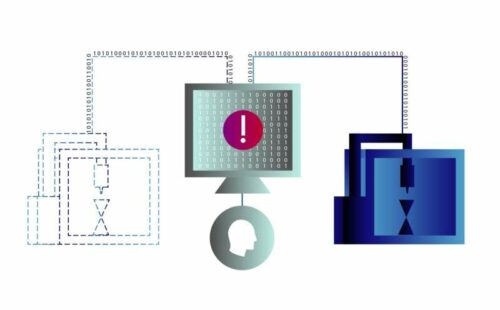Researchers have developed a way to prevent cyber-threats in the metaverse by training a digital twin to identify threats.

Metaverse has a variety of new fields for technological advancements. For example it has enabled opportunities for virtual business, investments and even a virtual lifestyle. Now to experience this virtual lifestyle, metaverse allows you to create a digital version of yourself which is referred to as your “digital twin”. Any digital copy of a physical object will be, in the metaverse, referred to as a digital twin of the respective physical object.
Digital twin enables the user to experience anything in the virtual world. Not only does it end there but digital twins are also opening doors for better products across automotive, health care, aerospace and other industries. According to a new study, cybersecurity may also fit neatly into the digital twin portfolio.
As more robots and other manufacturing equipment become remotely accessible, new entry points for malicious cyberattacks are created. To keep pace with the growing cyber threat, a team of researchers at the National Institute of Standards and Technology (NIST) and the University of Michigan devised a cybersecurity framework that brings digital twin technology together with machine learning and human expertise to flag indicators of cyberattacks.
The team built a digital twin to emulate the 3D printing process and provided it with information from the real printer. As the printer built a part (a plastic hourglass in this case), computer programs monitored and analyzed continuous data streams including both measured temperatures from the physical printing head and the simulated temperatures being computed in real time by the digital twin.
Researchers launched waves of disturbances at the printer. Some were innocent anomalies, such as an external fan causing the printer to cool, but others, some of which caused the printer to incorrectly report its temperature readings, represented something more nefarious.
The programs analyzing both the real and digital printers were pattern-recognizing machine learning models trained on normal operating data, which is included in the paper, in bulk. In other words, the models were adept at recognizing what the printer looked like under normal conditions, also meaning they could tell when things were out of the ordinary.
The framework provides tools to systematically formalize the subject matter expert’s knowledge on anomaly detection. If the framework hasn’t seen a certain anomaly before, a subject matter expert can analyze the collected data to provide further insights to be integrated into and improve the system.
Yet, researchers plan to study how the framework responds to more varied and aggressive attacks in the future, ensuring the strategy is reliable and scalable.
Reference : E. C. Balta et al, Cyber-Attack Detection Digital Twins for Cyber-Physical Manufacturing Systems. IEEE Transactions on Automation Science and Engineering (2023). DOI: 10.1109/TASE.2023.3243147






